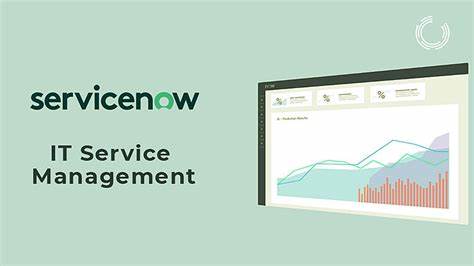ServiceNow ITOM Suite: Overcoming Challenges
As businesses strive to improve their IT service management (ITSM) and operational efficiency, ServiceNow ITOM Suite has emerged as a powerful toolset to streamline IT operations and automate workflows. ServiceNow ITOM Suite encompasses various modules such as Discovery, Service Mapping, Event Management, and Orchestration, which work in tandem to provide end-to-end visibility and automation across the IT landscape. However, like any other technology implementation, ServiceNow ITOM Suite comes with its own set of challenges that organizations need to address for successful adoption and utilization. In this blog, we will explore some common challenges associated with ServiceNow ITOM Suite and discuss strategies to overcome them.
Challenge 1: Complex and Dynamic IT Environment
Modern IT environments are complex and dynamic, with a multitude of applications, systems, and infrastructure components spread across on-premises, cloud, and hybrid environments. Discovering and managing these resources can be challenging, as IT environments constantly evolve with changes such as new deployments, updates, and decommissioning of assets. This complexity can lead to incomplete or inaccurate discovery results, which may impact the effectiveness of the ServiceNow ITOM Suite.
Solution: Establish Comprehensive Discovery and Service Mapping Processes
To overcome this challenge, organizations need to establish comprehensive discovery and service mapping processes. This involves the regular and automated discovery of all IT assets, including applications, servers, network devices, and storage, using the ServiceNow Discovery module. It is essential to configure and fine-tune discovery patterns and schedules to ensure accurate and up-to-date results. Additionally, organizations should implement a Service Mapping module to create dynamic service maps that provide a holistic view of IT services, their dependencies, and relationships with underlying infrastructure components. This will enable organizations to gain a complete and accurate understanding of their IT environment, which forms the foundation for effective ITOM operations.
Challenge 2: Lack of Centralized Event Management
In complex IT environments, events such as incidents, alerts, and notifications are generated from various sources, such as monitoring tools, log analyzers, and performance management systems. Managing these events in a siloed and decentralized manner can result in duplication of efforts, inconsistent handling of events, and delayed response times. This can impact the ability of ServiceNow ITOM Suite to proactively identify and resolve issues, and can also lead to increased downtime and business disruptions.
Solution: Implement Centralized Event Management
Organizations should implement centralized event management using the ServiceNow Event Management module. This involves aggregating events from various sources into a single event management system, normalizing and de-duplicating events, and enriching them with contextual information. This will enable organizations to gain a unified and contextualized view of events, prioritize them based on impact and urgency, and automate event correlation and remediation workflows. By centralizing event management, organizations can streamline incident management, reduce resolution times, and enhance overall ITOM operations.
Challenge 3: Limited Automation and Orchestration
ServiceNow ITOM Suite offers powerful automation and orchestration capabilities through its Orchestration module, which allows organizations to automate IT processes and workflows, and execute tasks across different systems and applications. However, organizations may face challenges in creating and managing complex automation workflows, integrating with third-party systems, and monitoring and troubleshooting automated processes.
Solution: Optimize Automation and Orchestration Workflows
Organizations should follow best practices such as modular design, version control, and testing in a controlled environment. Organizations should also leverage ServiceNow’s integration capabilities to seamlessly integrate with 3rd party systems and leverage pre-built integration packs. Additionally, organizations should establish robust monitoring and troubleshooting mechanisms, such as logging, event management, and reporting, to gain visibility into automated processes and quickly identify them.







